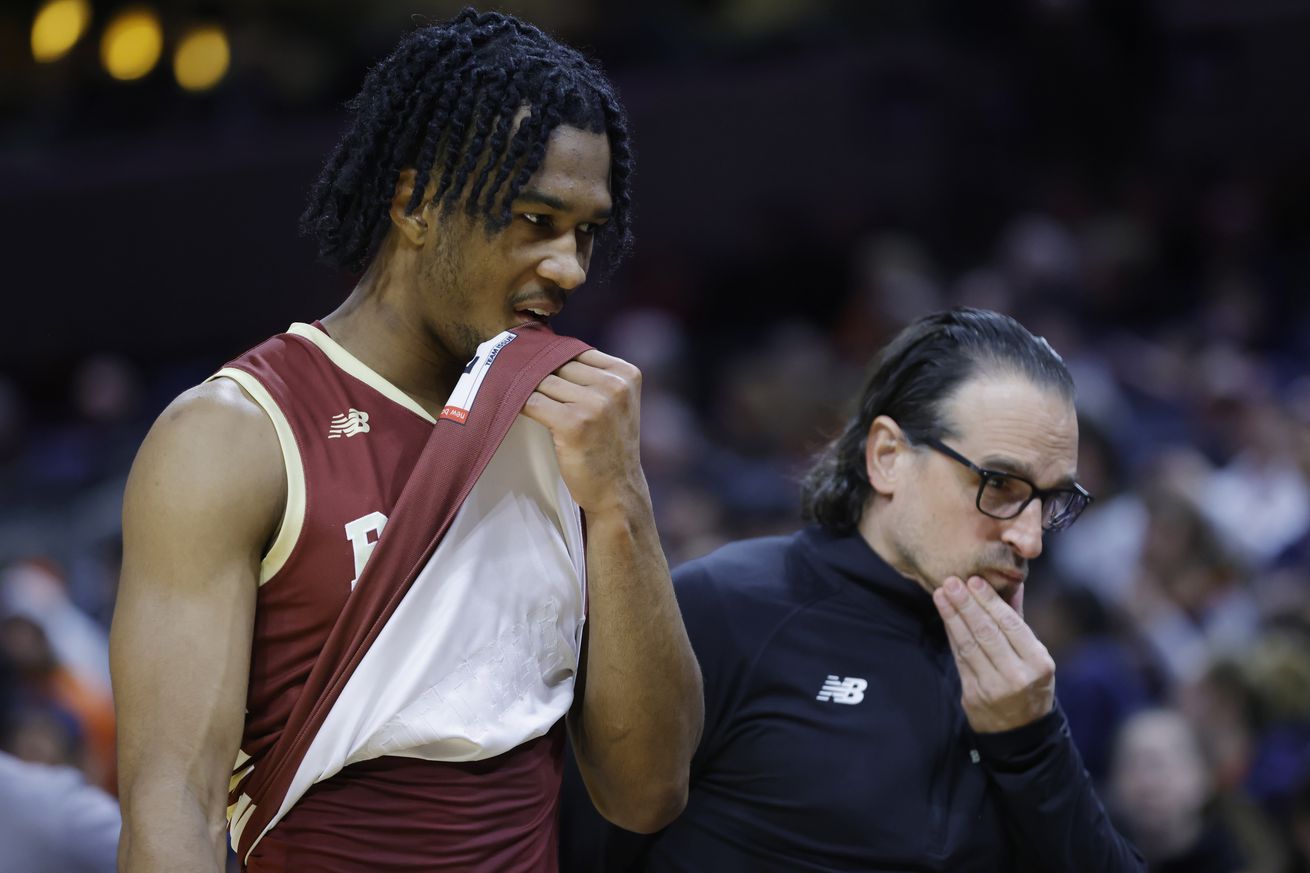
Alright, apologies for the long hiatus. I’m back this week, and there is a lot to break down. The Eagles have slumped heavily in recent weeks, going winless in their last five games and likely to be heavy underdogs in their next three (and perhaps more) contests. Let’s get into it:
- Dion Brown’s aggressiveness. After going for 20 points on 6-10 shooting (just the fourth time all year he’s attempted double-digit shots) against SMU, Brown talked about feeling more comfortable and more selfish within the flow of the offense. Since then, he’s averaged 5.0 points per game and has only reached double digits once (in the ugly blowout against UVA in which Donald Hand got ejected, thrusting Brown into more minutes). I’ve written extensively that I think Fred Payne deserves the chance to start (he was a bright spot yet again, by the way, with 17 points on 7-10 shooting against UVA) but I’ve also given up hope on that happening. Grant was quick to pull the trigger on benching Kelley for Beadle, and I thought that maybe he would do the same with Payne for Brown. That has not proven to be the case. Brown impacts the game in several ways – he’s an excellent offensive rebounder for his size – but this team has yet to find a reliable third scoring option behind Hand and Venning (until Strong comes back). Brown plays like he’s almost scared of that role. He rarely looks to assert himself, settling only for the open shots that manage to find him. He’s hesitant, and it looks like he doesn’t want the ball in his hands. Yet the flashes are there! Against Duke, he had two post-up buckets (one of which was against Mason Gillis, who has 40 pounds on Brown) that showcased some nifty footwork to find the basket. I have no illusions about Brown’s athletic limitations at this point in the season, but I still think he can (and needs) to be a larger factor in the offense of the starting group.
- The “big” lineup. Since debuting it a few weeks ago in limited minutes, Grant has continued to experiment with lineups featuring both Hastings and Venning. I was surprised when he continued to go to it – Hand told reporters that it hasn’t really been used in practice, and the on-court results have not been great – but it might be Grant’s best solution to his 4 problem. I wrote in my last column that Eli Strong might be the most important player on the roster by virtue of his scoring and, more importantly, his position. Since his injury, I’ve been at least partially vindicated. The 6’4, 215 Roger McFarlane has been starting at the 4, and BC has largely struggled as a result. The first half against Duke was excellent (more on that later) but in general, opponents have beat up on the Eagles inside and then used that inside advantage to find shooters on the perimeter. Kany Tchanda is the future at the position, but he was out against Duke with a concussion and is clearly not ready. That essentially leaves the big lineup as the only alternative. It was disastrous against Duke and not much better against UVA, but if Grant emphasizes it in practice I think it could become at least passable while McFarlane is resting. The Eagles’ defensive scheme (if you can call it that) has no problem with putting bigs on the perimeter to dance with guards. I think Hastings is probably the more laterally mobile of the 2; I would put him as the 4 while hiding Venning on a non-shooter to lurk in the paint for blocks and emergency help coverage. It’s never going to be dominant or even a strength, but there needs to be some passable answer here.
- Where is the team that played the first half against Duke? That this season has not gone according to plan is probably the understatement of the century, and there’s been a lot of midseason diagnosing of why it has gone so badly wrong. There are a lot of explanations, to be sure. In the big picture, BC’s NIL limitations and the predominance of the portal over college basketball today has certainly played a role in how badly decimated BC’s roster was left in the offseason. Grant also whiffed on his portal acquisitions and roster construction; he has also had a rough season in terms of on-court coaching. But I think there is no question that this team – while certainly limited in terms of talent – should be better than they are. The win against Boise St. and the first half against Duke are proof that this team has a second gear – it has just been barely able to find it. Against Duke in the first half, the game plan was clear – get the ball down low. Attack the basket. And it was working! Moreover, the defensive effort was off the charts. Granted, Duke missed some bunnies, but in general BC deserved to be in that game. I have no question that if the team played like that against the likes of Syracuse, Notre Dame, or Virginia, BC is competitive in all 3 and probably wins at least one. Instead, we get Grant citing a “knockout punch” within the first six minutes of the UVA game, essentially saying BC never had a chance. A hallmark of Grant’s first three teams on the Heights was their improvement over the course of the season; blowout losses in the first half of the year became competitive and even wins in the second half. I have not seen any kind of growth in this year’s team, but I know that they are far from their ceiling. I want to at least see competitive basketball in the second half of the ACC slate, playing to the level this team has demonstrated they are capable of.
Next Week: @UNC 1/25